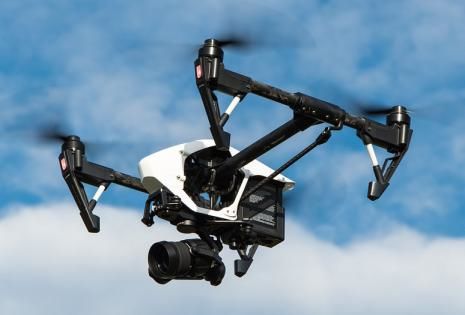Ohio Testing Out Using Drones To Monitor Highway Traffic

According to the University, “Low-altitude drones will monitor traffic and incident response along the U.S. 33 Smart Mobility Corridor, a 35-mile stretch between Dublin and East Liberty, in conjunction with the state’s current fixed-location traffic camera system. Sensors and communication equipment will feed UAS detection and tracking data to the Ohio Department of Transportation’s Traffic Management Center. The Unmanned Traffic Management (UTM) solution will enable ODOT to respond more rapidly and effectively to situations on the road.”
Basically since drones are more mobile compared to fixed cameras, they’re hoping that the use of drones will allow them to spot any accidents or issues on the road faster, thus allowing them to respond to such situations in a more timely manner which could also potentially reduce a traffic pile up.
That being said, there are some clear drawbacks to using drones and that is its battery. Since most commercial drones weren’t designed to fly for prolonged periods of time, this means that constant monitoring might not be particularly feasible, but we suppose we’ll have to wait for the results of this pilot program to know if they are effective to begin with.
You May Also Like
Popular Right Now
- First Shutdown of Niagara Falls in 12,000 Years: A Rare Sight to Behold
- Former Google Engineer claims that humans will achieve immortality soon
- Romotow: The Foldable Camping Trailer Inspired By A USB Flash Drive
- LYRA: Swiss Startup Unveils AR Smart Glasses for Office Work, City Life, And Traveling
- Man Caught in China Smuggling $46K Worth of Intel CPUs Wrapped Around His Waist
- iPhone 15 Pro Max may bring thinner bezels than Xiaomi and Samsung’s latest flagships
- OpenAI's new GPT-4 with a "human-level performance" scored up to 93% on SAT exams
- iPhone SE 4 could be Apple's secret weapon to 'steal' budget customers from Samsung
- Lenovo Launches New Workstations, With Aston Martin DNA
- Ubergizmo’s Best of Mobile World Congress 2023
- TCL NXTPAPER 11 Tablet With Paper-like Screen Experience
- Nothing Phone 2 Coming To The U.S. In Late 2023
- Ubergizmo’s Best Of K-Startup @ CES
- Intel Core i9-13900T Shows Extraordinary Efficiency In Early Benchmarks
- Ubergizmo’s Top 3 MIK Products @ CES 2023
- Three LG gram Laptops For 2023. The Lightest Got Even Lighter